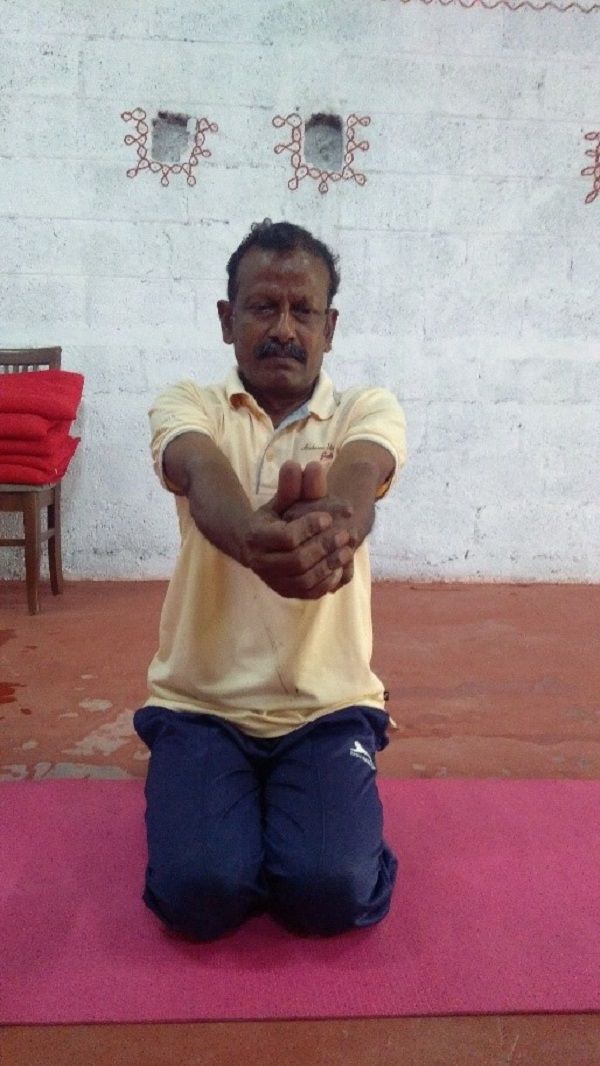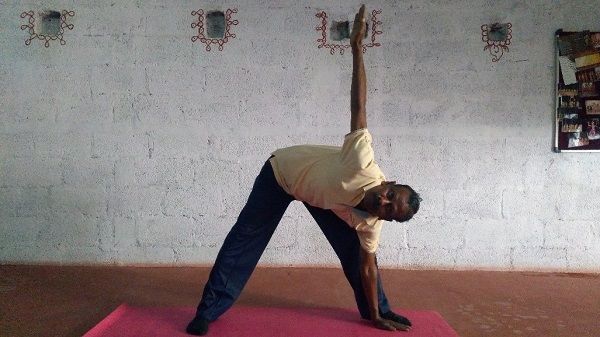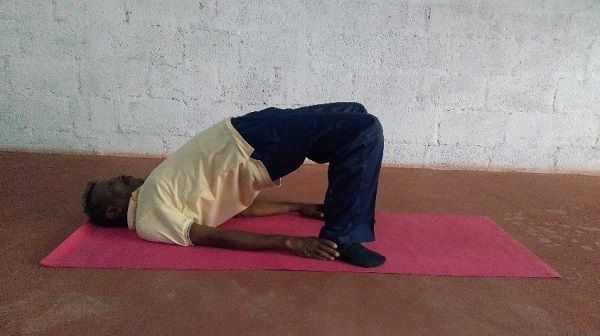
Yoga can be really effective for stressed out deskbound employees. Asha Sarella, movement therapist and counsellor, talks to Sundara Raj, exponent of Hatha yoga, to recommend simple asanas to relieve stress, head, neck and back strain and remain fit, energetic and focussed at work.
Sitting in an air-conditioned cabin, sipping your favourite latte or green tea, labouring over spreadsheets / pivot / codes on the screen could be your monotonous work every day. There is so much pressure on closing that deal or completing that project within the deadline or getting those numbers for your team that your mind is totally stressed out. Even the short break for lunch or coffee-tea that may require walking around seems a challenge.
After work, you have your home and family to attend to, but sometimes it could get so tiring that all you want to do is just doze off. This lifestyle could lead to health hazards as our bodies are not designed for high pressure sedentary existence. Often people suffer from shoulder and neck pain, back aches, headaches. These in turn affect your productivity, communication and relationships around you.
I would suggest a combination of body exercises and breathing techniques to help you handle your work life with more enthusiasm and energy. A good 20 mins yoga everyday would let you deal with those stiff muscles, releasing more energy.
1. Pranayama (Breathing exercises):
Pranayama is simple breathing techniques, it is a practise of controlling your breath which is the source of our life.
Nadi Shudhi / Anulom Vilom:
- This breathing technique is suitable for any age group
- Controls blood pressure
- Improves concentration, patience and creativity
- Increases oxygen supply throughout the body
- As circulation improves, energy levels also increases
- And helps the mind to calm down and bring mental peace
Brahmari:
- An instant calming down technique
- This breathing technique helps soothe the nerves, effective for relaxing the mind
- Helpful for people with high blood pressure
Breathing exercises are best practised first with a professional and then should be practised at home.
2. Eye exercises
As we spend most of the time in front of the screens, our eyes undergo a lot of strain. There is itching, burning sensation or blurred vision. Here are few eye exercises to practise at office or home. It is better to do them once in two hours.
Trataka:
- Sit in a comfortable position / sit in Vajrasana as shown in the picture below, stretching both hands in front of you, and stare at the tip of thumb fingers. Keep staring until there are tears in your eyes, and then close both eyes and relax. You can repeat this as many times as you are comfortable.

Warmth on eyes:
- Rub your palm for few seconds until you find the heat and gently press it on your eyes until there is warmth, repeat it once in 2 hours. Your eyes will feel relaxed.
3. Asanas for physical well being
Sitting for longer durations without much movement weakens your entire spine as there is not enough blood supply to the vertebrates which results in hunch back, stiff shoulder and neck pain. Practising these Asanas every day would help you relieve those aches. Consider Yoga like brushing your teeth every day, which means you can’t miss it.
Trikonasana (Triangle pose)
Whether you liked geometry or not during your school, but this triangle pose could save you from the wear and tear of your hip and leg muscles. This exercise may look like a very simple bending exercise but this can give you profound results. It stretches your entire leg muscles building their flexibility.
Instructions for Trikonasana:
- Stand with both the legs placed at equilibrium.
- Spread out both the legs as far as you can
- Spread out both the hands in line with the shoulders, inhaling place the right hand such that it is pointed out to the sky and the left hand should be touching the left leg.
- Do not bend the knees.
- Taking normal breath stay in the asana as long as you can and then come back to normal position slowly.
Benefits of Trikonasana:
- Reduces the fat on the sides of the body,
- Reduces the stress on the nerves and rejuvenates them.
- Useful for those suffering from sciatica.
- Strengthens the reproductive organs
- Strengthens the rib bones, waist part, legs and also the back.

Tadasana (mountain pose)
Tada means mountain, just standing still and firm like a mountain. This may sound like a very simple asana however it takes a bit of practise to get the right posture. You could even do this when you take a short break from your computer screen. You could do this asana anywhere, home / office.
Instructions for Tadasana:
- Stand with stability, stretch out both the hands outward in front in line with the floor.
- Inhaling slowly raise up the hands and heels.
- Stay in this position as long as you can and come back to normal position slowly exhaling the air
Benefits of Tadasana:
- An equilibrium will be created between the body and the mind
- Blood circulation to all the organs also improves
- Everyone can practise this asana.

Sethubandhasana (Bridge pose)
Sethu means bridge, bandha means locking, laying on the floor and posing like a bridge is called sethubandhasana.
Instructions for Sethubandhasana:
- Lie flat on the back, folding both the knees towards the buttocks.
- Breathing in, stretch out both the hands close to the body to hold the heel joint
- Exhale raising the spine area and try to touch the chin to the chest
- Slowly come back to normal position.
Uses of Sethubandhasana:
- Remedy for back aches
- Strengthens back, buttocks and hamstrings.
- Good for women in peri-menopause and menstrual pain. .
- Improves digestion.
- Rejuvenates tired legs.
- Helpful in asthma, osteoporosis, and sinusitis high blood pressure.
- Calms the brain.

Try these simple asanas to start with. I would suggest you to initially learn from a professional yoga trainer and then practise at home regularly.
Happy working days! And stay physically active!
(Sundara Raj is a diploma holder in yoga from Sri. Venkateshwara University, Tirupathi. He has taught yoga to children at Kendriya Vidyalaya School for 27 years and currently holds Hatha yoga classes in Bangalore.)






